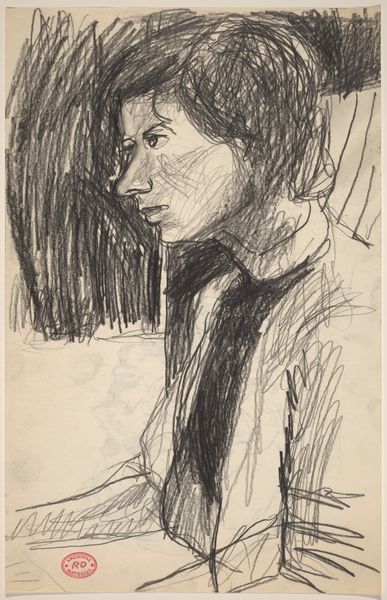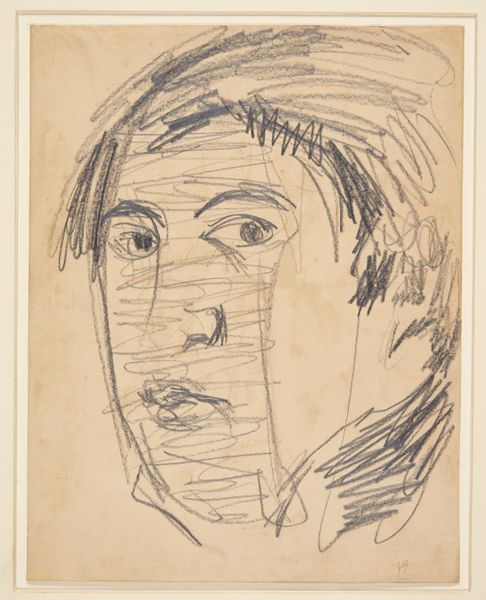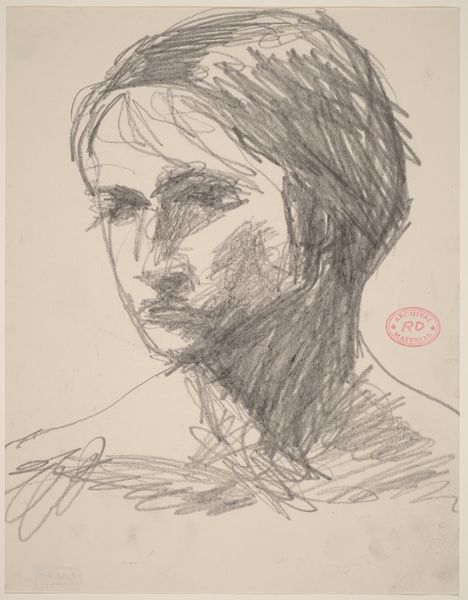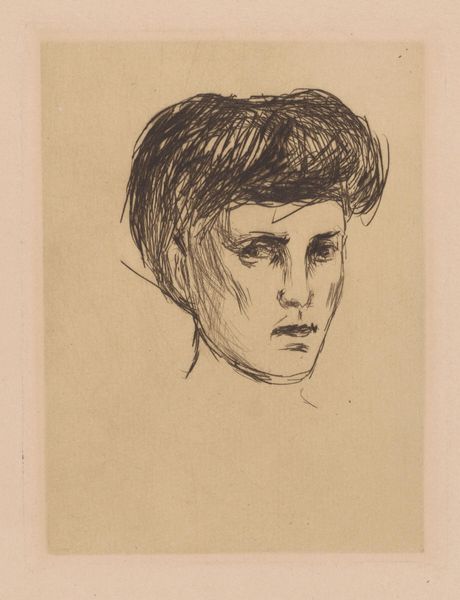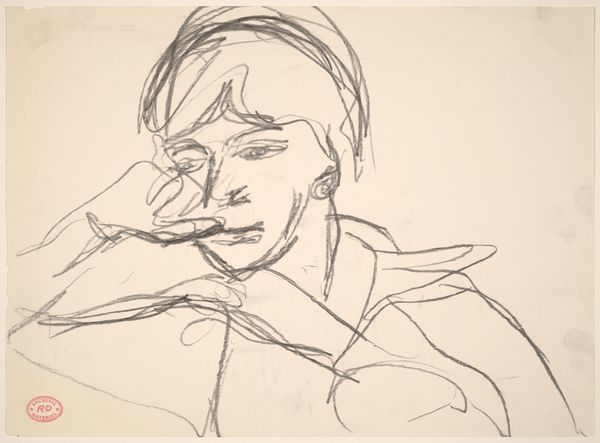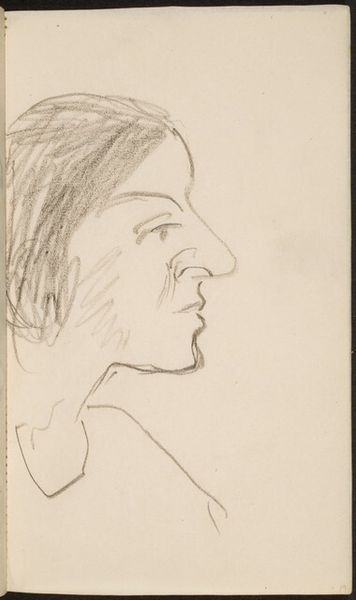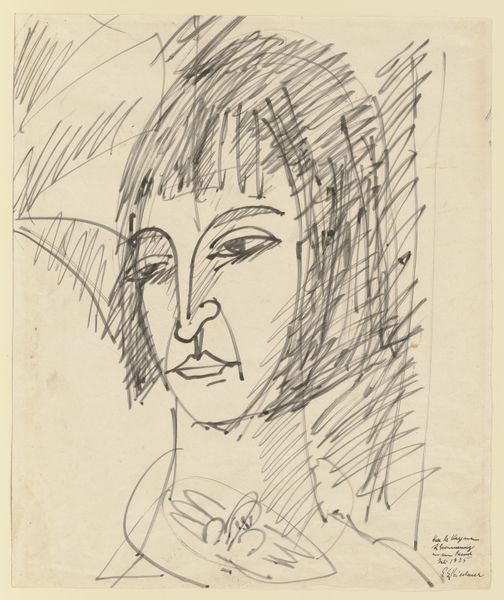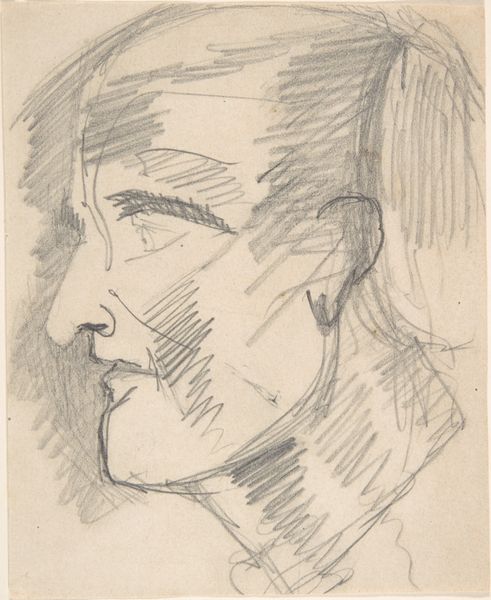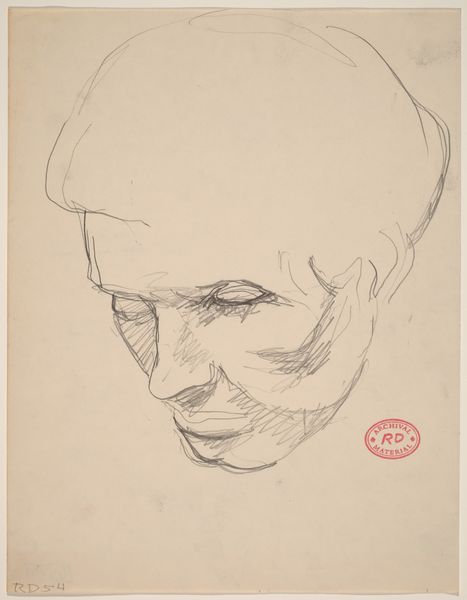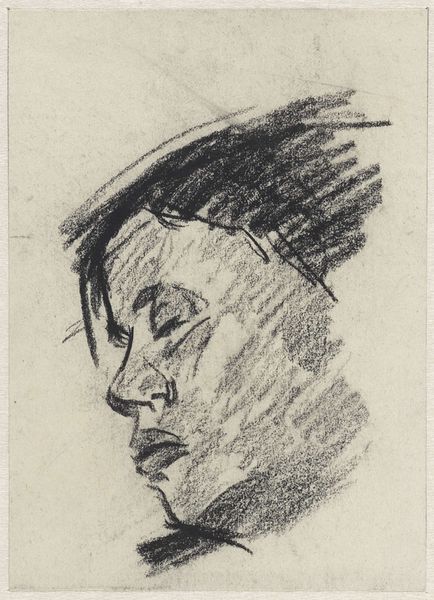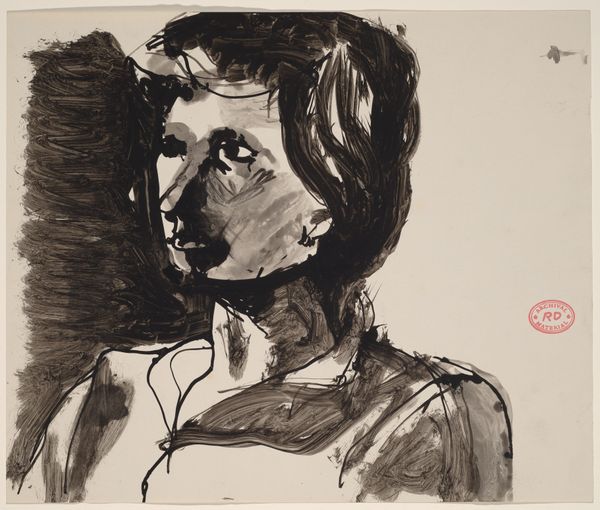![Untitled [profile head of a woman] by Richard Diebenkorn](/_next/image?url=https%3A%2F%2Fd2w8kbdekdi1gv.cloudfront.net%2FeyJidWNrZXQiOiAiYXJ0ZXJhLWltYWdlcy1idWNrZXQiLCAia2V5IjogImFydHdvcmtzLzRjY2MzZjU0LTVmYjAtNDBjNy1hMDgzLWE5NzU5NTljNGZhZS80Y2NjM2Y1NC01ZmIwLTQwYzctYTA4My1hOTc1OTU5YzRmYWVfZnVsbC5qcGciLCAiZWRpdHMiOiB7InJlc2l6ZSI6IHsid2lkdGgiOiAxOTIwLCAiaGVpZ2h0IjogMTkyMCwgImZpdCI6ICJpbnNpZGUifX19&w=3840&q=75)
drawing, pencil
#
portrait
#
drawing
#
contemporary
#
figuration
#
bay-area-figurative-movement
#
pencil drawing
#
pencil
Dimensions: overall (irregular): 27.3 x 33 cm (10 3/4 x 13 in.)
Copyright: National Gallery of Art: CC0 1.0
Curator: Before us, we have an intriguing work: an untitled pencil drawing identified as "[profile head of a woman]", by Richard Diebenkorn, created sometime between 1955 and 1967. Editor: My first thought? Vulnerable. The raw, sketched lines create a sense of immediacy, like we’re catching a fleeting glimpse of this woman’s inner world. Curator: Absolutely. Diebenkorn's use of line is critical here. Note how the density of shading around the hair contrasts with the lighter, more suggestive lines that define her face and neck. The unfinished quality allows the viewer to participate in its creation. Editor: And that unfinished quality reflects a specific era, doesn’t it? The mid-century saw artists pushing back against traditional portraiture, favoring abstraction and subjective interpretation. This piece feels part of that rebellion, an exploration of identity rather than a mere representation. Curator: Precisely. Considering the time, abstraction held significant power, representing individual freedom amidst a backdrop of shifting social dynamics. Think about how gestural drawing also offered artists avenues to convey personal anxieties and societal tensions. Editor: Yes, and Diebenkorn, known for his abstract expressionism, uses this portrait as a bridge to understanding themes relevant during the '50s and '60s. A quiet commentary perhaps, on the female gaze and societal expectations. The rough paper itself adds to that sentiment, a defiance of pristine presentation. Curator: It underscores the artistic process, emphasizing its inherent qualities of material—graphite and paper. It becomes an interplay between control and spontaneity. There's something so modern and raw in this approach. Editor: It prompts a crucial question: What did figuration mean to someone primarily associated with abstraction? Maybe he viewed it as a way to maintain an historical conversation, to engage tradition, while imbuing it with contemporary anxieties. Curator: It allows for a compelling analysis, a balance between structural form and sociocultural insight, making it relevant today as it invites discussions on evolving cultural definitions. Editor: Seeing Diebenkorn through a portrait reminds us that even within personal representations, echoes of society always reside.
Comments
No comments
Be the first to comment and join the conversation on the ultimate creative platform.
